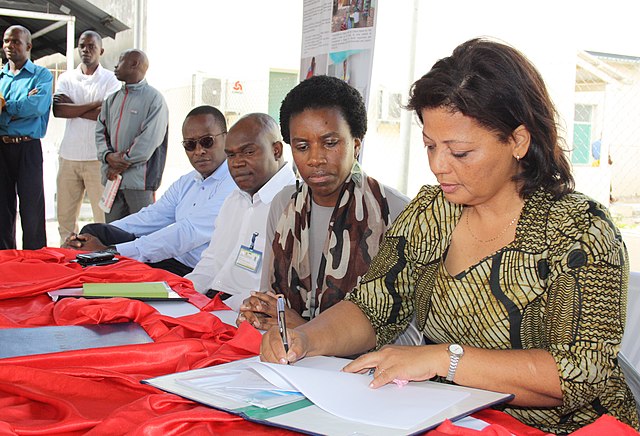Disaster risk reduction (DRR) is an approach for planning and taking steps to make disasters less likely to happen, and less damaging when they do happen. DRR aims to make communities stronger and better prepared to handle disasters. When DRR is successful, it decreases the vulnerability of communities because it mitigates the effects of disasters. This means DRR can reduce the severity and number of risky events. Since climate change can increase climate hazards, DRR and climate change adaptation are often looked at together in development efforts.
Landmines are also a hazard that cause much loss of life and injury. Female de-miners in Lebanon set off to clear landmines.
Different kinds of disasters
People have adapted the design of houses to protect them from rising flood waters. Small boats are used to transport people and food to sustain livelihoods. This kind of disaster risk reduction is also a method for climate change adaptation
Panel on Disaster Risk Reduction in the age of Climate Change during a 2012 European Union Development Day
Climate change adaptation
Climate change adaptation is the process of adjusting to the effects of climate change. These can be both current or expected impacts. Adaptation aims to moderate or avoid harm for people, and is usually done alongside climate change mitigation. It also aims to exploit opportunities. Humans may also intervene to help adjustment for natural systems. There are many adaptation strategies or options. They can help manage impacts and risks to people and nature. The four types of adaptation actions are infrastructural, institutional, behavioural and nature-based options.
Wetland restoration in Australia
Checking contours in Monterey County strawberry fields, United States
Terraces, conservation tillage and conservation buffers save soil and improve water quality on this farm in Woodbury County in northwest Iowa, United States.
Launching the Coastal City Adaptation Project in Quelimane, Mozambique








